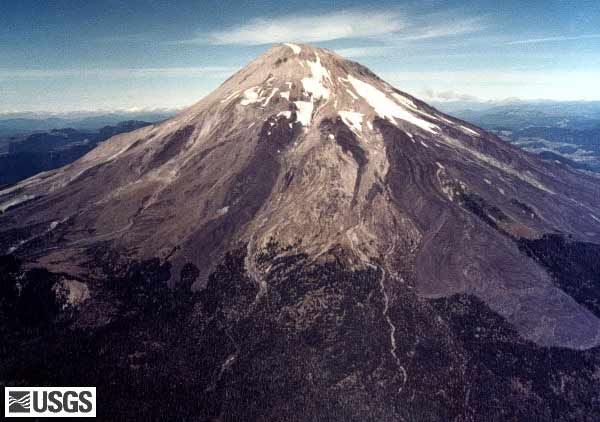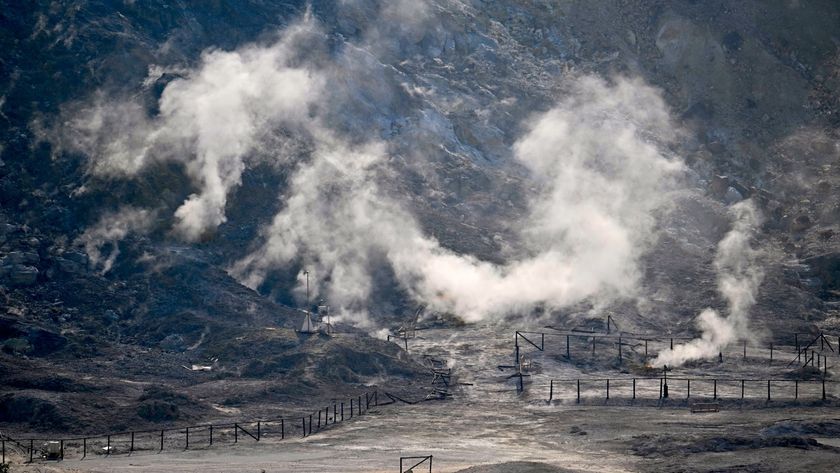NASA Drops Probes Into Volatile Volcano

High-tech sensor pods were recently air lifted into the mouth of a volcano to monitor hot spots and provide early warning if the peak starts to blow.
The sensors are part of a NASA project to study volcanoes from the inside.
On July 14 scientists lowered the pods into the mouth of Washington's Mount St. Helens, one of the most active volcanoes in the United States.
The project aims to improve our ability to predict impending eruptions, both on Earth and on other planets.
"Hostile environments like Mount St. Helens are proving grounds for future space missions, such as to Mars, where we may someday have similar sensor networks to track a meteor strike, dust storm or Mars quake, as a virtual scientist on the ground," said Steve Chien, principal scientist for autonomous systems at NASA's Jet Propulsion Laboratory (JPL) in Pasadena, Calif. Scientists at JPL collaborated with researchers at the U.S. Geological Survey (USGS) on the project.
Fifteen of the spider-shaped pods were lowered by cable from a helicopter hovering about 100 feet (30 meters) in the air. The instruments are fitted with seismometers to detect earthquakes, GPS receivers to pinpoint their exact locations and measure subtle ground deformations, infrared sounders to sense volcanic explosions, and a lightning detector to search for ash cloud formation.
"With these high-tech instruments, we can rapidly respond during periods of volcanic unrest to supplement our permanent monitoring network or quickly replace damaged stations without excessive exposure to personnel," said Rick LaHusen, an instrumentation engineer at the USGS's Cascades Volcano Observatory in Washington.
Sign up for the Live Science daily newsletter now
Get the world’s most fascinating discoveries delivered straight to your inbox.
The robotic spiders perch atop three legs, and can operate in extreme temperatures and treacherous terrain. They send their data to each other and back to scientists through the Earth Observing-1 (EO-1) satellite. The pods have a battery life of about a year.
"This project demonstrates that a low-cost sensor network system can support real-time monitoring in extremely challenging environments," said WenZhan Song, a principle investigator for the project and a researcher at Washington State University in Vancouver.
Mount St. Helens has a treacherous past. In 1980 a catastrophic eruption from the volcano killed 57 people and caused massive damage to homes, roads, bridges and railways.
In 2004, the peak came back to life and spewed out more than 26 billion gallons (100 million cubic meters) of lava, along with tons of rock and ash.
The work was funded by NASA's Earth Science Technology Office through the Advanced Information System Technology program and also by the USGS Volcano Hazards Program.
- Image Gallery: Wild Volcanoes
- Volcano Quiz: Part 1, Part 2
- Volcano News, Information and Images












